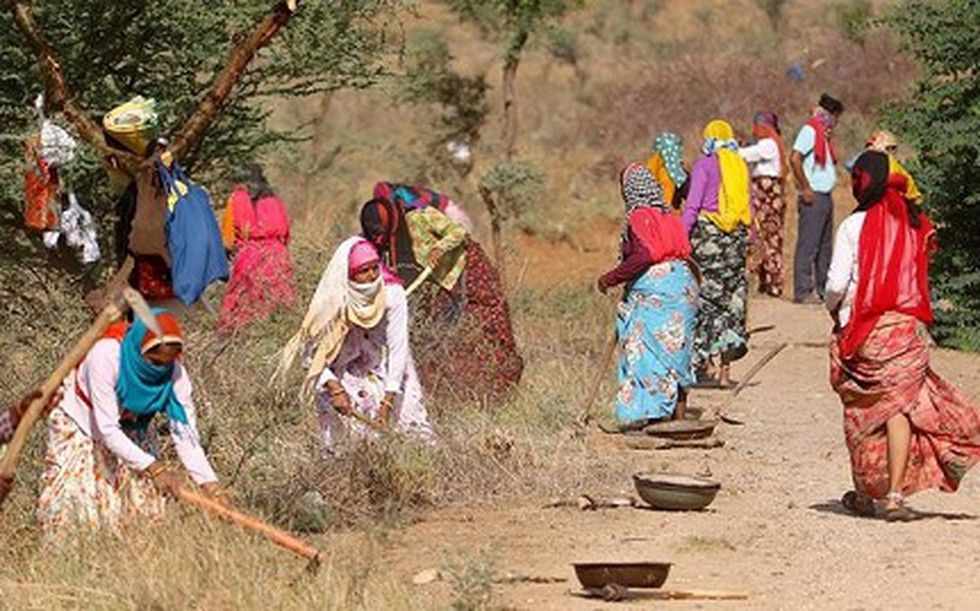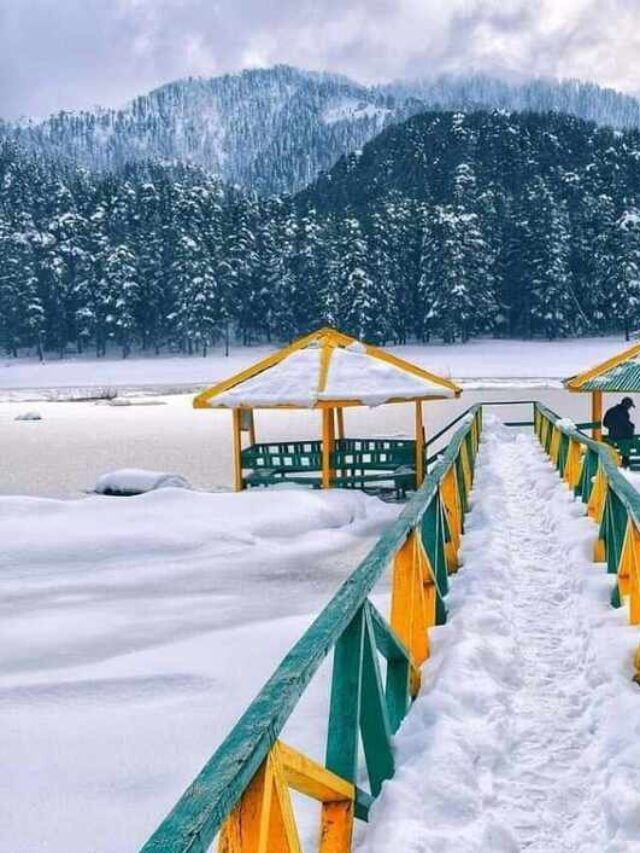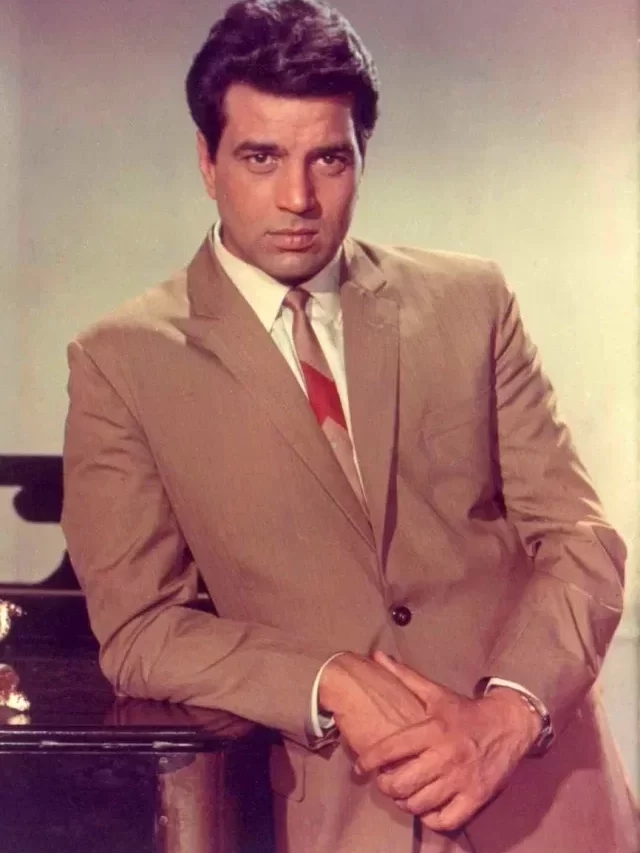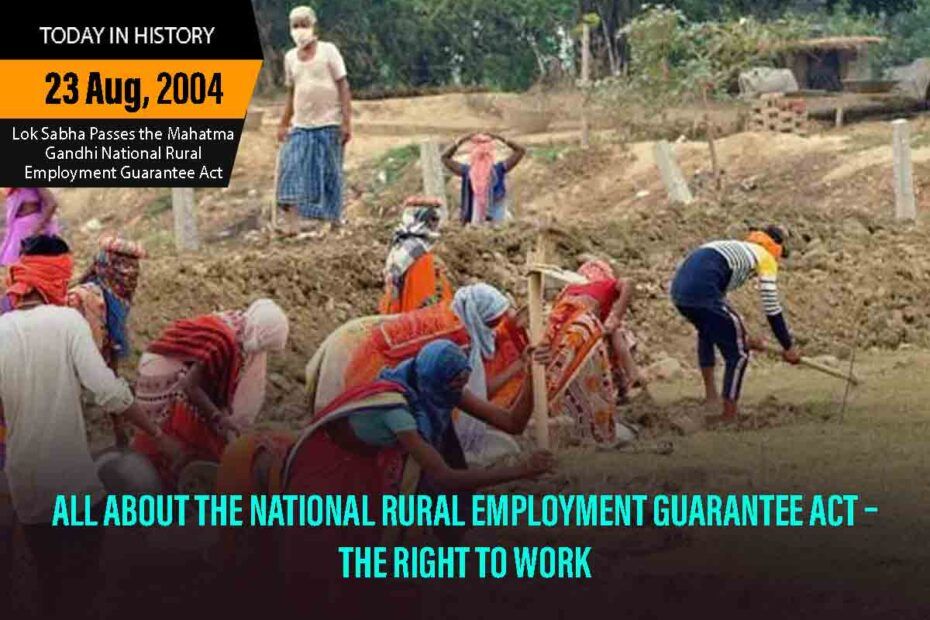A preponderance of the rural Indian population count themselves below the poverty line and find themselves incapable of providing their families with the basic necessities of life, i.e food, shelter and clothing. Thus, to compensate for the economical hardships faced by the rural communities, the Government of India introduces several different employment policies and reforms intending to benefit families falling under the below-poverty line scheme. One such scheme of the central government which was enacted in the year 2005 to aid the low-income groups is the MGNREGA 100 days work policy. Wondering what is National Rural Employment Guarantee Act? Can the scheme call itself a successful venture in rural India? Is MGNREGA only for BPL families? Why did NREGA change its name to MGNREGA? When did MGNREGA started? MGNREGA how many days?
Join me in this article as I demystify the MGNREGA 100 days work scheme introduced by the Central Government in the year 2005 to generate guaranteed work for the rural communities.
What Is National Rural Employment Guarantee Act?
The MGNREGA is a policy implemented by the central government that aims to provide 100 days of guaranteed employment to the rural Indian population. On 23rd August 2004, Lok Sabha passed the Mahatma Gandhi National Rural Employment Guarantee Act. But, what is National Rural Employment Guarantee Act? When did MGNREGA started, its objectives and Is MGNREGA only for BPL? Let’s read.

The Mahatma Gandhi National Rural Employment Guarantee Act is a policy implemented by the central government of India to provide 100 days of guaranteed work to members of the rural population in each financial year. The scheme during its first phase was successful in reaching about 200 districts in February 2006. Again, in the financial year 2007-2008, the scheme was extended further to 130 districts.
During its third phase, the scheme was successful in covering every nook and corner of the country. Thus, the MGNREGA 100 days work guarantees jobs for 100 days at minimum wages to every rural population, covering the total Indian subcontinent.
What Is MGNREGA And Why NREGA Changed To MGNREGA?
The National Rural Employment Guarantee Act 2005 passed to create employment opportunities for rural households in each financial year saw a major transition in its name from NREGA to MGNREGA. But, why did Congress rename the scheme four years later?

In the words of the then Prime Minister Manmohan Singh,“NREGA has been aptly named after the Father of the Nation as he had always held the concept of Gram Swaraj in high esteem“. Reports suggested that the then government was planning to name the scheme under one family member from the Nehru Gandhi family.
Why Was MGNREGA Launched – The Right To Work
The National Rural Employment Guarantee Act passed in 2005 by the central government was to build rural human assets for the Indian economy. When a person works in any sector, be it the service sector or any other, the income generated by the person counts itself as essential for a country’s economy to remain stable. Thus, the government introduced the MGNREGA scheme in rural India to generate more employment and income opportunities for rural households.

The MGNREGA guarantees job to the poor for 100 days which helps the below-income families to generate income to sustain themselves and their families. Besides, the national rural employment guarantee act 2005 passed to aid the low-income groups also strengthens the country’s economy. Another important aim of the scheme was to strengthen democracy at the grass root level by solidifying the Panchayati Raj system!
Also Read- Why Congress Protesting In Delhi – Inflation, Unemployment, Or Hike In GST?
Who Is Eligible For MGNREGA – Is MGNREGA Only For BPL?
The MGNREGA guarantees job to the poor for a minimum of 14 days and a maximum of 100 days. If the panchayat officials fail to provide income opportunities to any registered person within 15 days of registration, the concerned person is eligible for getting an unemployment allowance. The MGNREGA besides generating income opportunities for the low-income groups provides an opportunity for the female to earn their living and lead an independent life.
Unlike the minimum wage scheme, where it has been found that women are entitled to less pay than men, strengthening gender discrimination, the case with MGNREGA is quite different. Here, both men and women receive equal pay for their work. Don’t you think India is now slowly heading towards gender equality?
But, is MGNREGA only for BPL? Can anybody register themselves for the MGNREGA? What are the eligibility criteria that must be met to enrol oneself on the scheme?
- The first and foremost criteria that must be met to register oneself to the national rural employment guarantee act is that the person must be a citizen of India. Unless one can show proof for the same, he/she will not be held eligible for registration.
- The MGNREGA 100 days work Policy is only applicable to adults, who have completed at least 18 years. Thus, at the time of application, the applicant must be 18 or have completed 18 years of age.
- The applicant must belong to a local household under the concerned Gram Panchayat. To put it simply, the application must be done with a local Gram Panchayat. If the concerned Panchayat fails to provide income, then the neighbourhood Gram Panchayat can be involved.
- The applicant must volunteer for unskilled labour such as agricultural and allied activities, livestock management, Anganwadi works, etc.
MGNREGA Wage Rate
As mentioned before, the MGNREGA 100 days work follows gender equality in terms of payment of wages. Unlike the minimum wages, MGNREGA wages are equal for both men and women. Both genders get paid an equal amount of wages for their work.
According to the Ministry of Rural Development, no state has to date been able to provide equal minimum wages to women. Women are entitled to only 78℅ of the minimum wages paid to men. But, the MGNREGA wages fixed by the Centre make no discrimination between men and women and both receive equal pay for their work. But, this does not mean that the MGNREGA wage rate is flawless. There has been no significant increase in the wage rates of three states- Manipur, Mizoram and Tripura.
Though the rates are fixed by the Central Government, there has been very little progress in increasing the wage rate for the workers. The MGNREGA says that there is no need to converge the MGNREGA wages with the minimum wages as the latter has been implemented unfairly and illogically. But, there has been a protest among the workers demanding higher pay.
In the words of a worker, “The fact that under the MGNREGA, both men and women are paid the same pittance is not a justification for non-payment of minimum wages. Since the MGNREGA is a statutory employment guarantee scheme, it is all the more important that it should be a viable option for the economic security of rural labour. The government knows that it cannot do away with the MGNREGA, which is why it is finding ways to undermine the programme”.
The Objectives Of The Scheme
- The most important objective of the MGNREGA 100 days work is to provide employment security in rural India by providing income opportunities to the low-income families who have registered themselves with their local Gram Panchayat to do unskilled labour.
- The MGNREGA guarantees job to the poor during the season of unemployment. To put it in simple words, during the periods when jobs are inadequate or income opportunities are scarce, the MGNREGA scheme introduced by the central government aids rural families to earn a living and getting access to basic necessities of life.
- Through the MGNREGA employment scheme, the government aims to create more human assets rather than liabilities for the nation. It also strengthens the resource base of rural families.
- The MGNREGA scheme works close to the Panchayati Raj system. Thus, it also helps to strengthen democracy at the grassroots level.
Also Read- What Is Agnipath Scheme – Everything You Need To Know About The Military Reform
Benefits Of The MGNREGA Scheme

1. MGNREGA And Employment Generation
One of the benefits that counts itself on the top of the list is the employment generation for rural India. Through the Central Government’s MGNREGA scheme, rural households are entitled to get 100 days of work which aids them in generating income and earning a living. Additionally, if they do not get employment under the scheme within 15 days of registration, they are also liable for unemployment allowance to sustain their families.
2. MGNREGA And Rural Development
Without rural development, no economy can truly prosper. Thus, keeping in mind to fuel the Indian rural development, the Central Government of India passed the MGNREGA scheme on 2005 to aid in the development of the rural households through the generation of income.
The scheme aims to provide 100 days of wage employment to the poor and thus in every financial year, about 30℅ rural Indian families receive some sort of employment. Ultimately, the development of the rural poor through income generation also fuels the growth rate of the entire nation.
3. MGNREGA And Poverty Alleviation
When did MGNREGA started to alleviate poverty in rural India? The 100 days work guaranteed, besides generating income opportunities for the poor, also helped them to earn a living during periods when job security was at stake or job opportunities, limited or inadequate. Besides MGNREGA also shields the poor from further getting caught in the vicious cycle of poverty. It offers 50 days more employment opportunities to the poor to manage natural calamities like drought and famine.
Additionally, the government has merged other skill training with the MGNREGA scheme which further helped the workers to receive more wages than normal, ultimately helping with the alleviation of poverty.
4. MGNREGA And Gender Equality
The MGNREGA scheme has also enhanced gender equality in our country. So what is National Rural Employment Guarantee Act to do with gender equality? It provides income opportunities to both males and females. Thus, females can now register themselves for work, earn a living for themselves and lead an independent life. Moreover, the work is provided within a 5km radius of the local Gram Panchayat which further alleviates the extra cost of travelling. This in turn helps women specifically, as they do not need to spend extra on travel.
Additionally, they can also balance their household chores and still get enough time to work under the MGNREGA scheme. Moreover, the availability of crèches at the working site also helps women to look after their children. Thus, all these facilities attract more female population towards the MGNREGA which further strengthens gender equality in our country.
Conclusion
Though the MGNREGA was introduced to generate more income for the rural Indian population, reports suggest that there has been more focus on infrastructure development rather than giving employment opportunities to the low-income groups. Added to the problem is that there has been a delay in payments, delay in employing the job card holders leading to distress migration, etc.
But, it still holds true that despite its many flaws, the MGNREGA is a successful venture in itself to alleviate poverty in rural households and generate more income for unemployed adults.
For more relating articles, visit Discover










